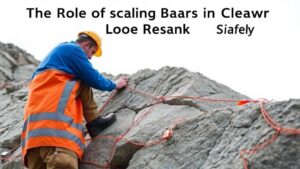The Role of Geographic Anomalies in Dowsing for Lost Treasure
The Role of Geographic Anomalies in Dowsing for Lost Treasure
Dowsing, often regarded as a pseudoscience, is the practice of utilizing tools such as dowsing rods or pendulums to locate hidden objects, particularly water, minerals, or treasures. Proponents of dowsing often assert that geographic anomalies play a critical role in this practice, influencing the ability of dowsers to detect lost treasures. This article explores the interplay between geographic anomalies and the phenomenon of dowsing, providing a comprehensive overview supported by historical examples and data.
Understanding Geographic Anomalies
Geographic anomalies refer to variations in the landscape that deviate from the norm. e include changes in topography, variations in soil composition, electromagnetic fields, and underground water sources. In relation to dowsing, these anomalies are believed to impact the motion of dowsing tools, guiding practitioners towards the locations of buried treasures.
- Topographical Changes: Valleys, hills, and other landscape features can influence the flow of energy, possibly affecting dowsing results.
- Soil Composition: Different types of soil can interact with dowsing tools in unique ways, affecting their responsiveness.
- Electromagnetic Fields: Variations in the Earth’s magnetic field may also contribute to dowsing successes.
The Science Behind Dowsing
The scientific community largely remains skeptical of dowsing as a valid practice. Nonetheless, some studies suggest that practitioners may not be as far-fetched as once thought. According to a study published in the Journal of Scientific Exploration, dowsers can detect subtle cues in their environment that may influence their outcomes, often at a subconscious level.
The concept of the “ideomotor effect,†which refers to involuntary movements made by the dowser, could play a vital role in the effectiveness of dowsing. When dowsers use rods, the slightest movement may lead to a significant result, much like how placing one’s hand in a body of water will influence the ripples created.
Historical Case Studies
Numerous historical examples highlight the intersection between geographic anomalies and successful dowsing endeavors:
- The Gold Dowsers of California: During the Gold Rush of the 19th century, many prospectors utilized dowsing techniques to locate gold deposits. Notably, the California hills, comprised of specific geologic structures, often helped these dowsers identify potential sites.
- Water Dowsing in the Alps: In the Swiss Alps, traditional water dowsers employed their skills to locate underground water reservoirs. region’s unique geological formations made certain areas more conducive to water flow, and dowsers became adept at identifying these zones.
Modern Applications and Tools
Today, dowsing is utilized not only in treasure hunting but also in environmental studies. Professionals studying land use, agriculture, and natural resources sometimes incorporate dowsing techniques alongside scientific methods.
Technological advancements have also led to the development of tools that can enhance traditional dowsing practices. Devices that measure electromagnetic fields or ground conductivity can help dowsers obtain a more informed understanding of geographic anomalies.
Addressing Skepticism
While anecdotal evidence and case studies abound, skepticism towards dowsing persists, primarily due to the lack of scientific validation in controlled environments. Critics argue that success stories may be attributed to randomness rather than any legitimate detection ability.
- Call for Research: Enhanced studies exploring the efficacy of dowsing, particularly in relation to geographic anomalies, could help to bridge the gap between believers and skeptics.
- Integrating Technologies: Collaborations between dowsers and scientists could foster a more profound understanding of the geographic factors at play.
Actionable Takeaways
For those intrigued by dowsing for lost treasure, it is essential to consider the geographic factors involved:
- Thoroughly research the geographic characteristics of the area in which you plan to dowse. Identify unique topographical features, soil types, and any geological anomalies.
- Combine traditional dowsing tools with modern technology to gain a comprehensive overview of the site.
- Be open to both scientific and anecdotal methods, as this duality may enhance your understanding of the practice.
To wrap up, geographic anomalies undoubtedly play a significant role in dowsing, offering rich avenues for exploration. Whether one views dowsing as an art, a science, or a combination of both, understanding the influence of geography can enhance the practice and potentially yield rewarding results.



